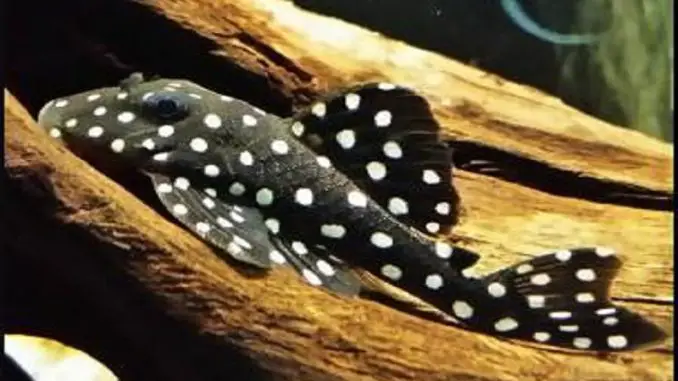
Although they are not one of the most popular plecos, Snowball Plecos have a gorgeous appearance and are pretty low maintenance compared to some other plecos. Care for Snowball Plecos is not complicated, and they are also smaller than the average pleco.
Their jet black coloring and white (or yellow) polka dots make them stand out in any tank. It’s like they are always ready to step out on the town for a party. Actually, those polka dots look like snowballs, which is where they get their name.
They are also great tank cleaners, taking care of extra algae in your tank.
In this article, I’ll cover everything you need to know about keeping Snowball Plecos, from their background, behavior, appearance, and diet to proper care and habitat. We’ll even cover breeding these polka-dot beauties. Read on as we learn about one of my favorite freshwater fish.
TABLE OF CONTENTS
Snowball Pleco Facts & Overview
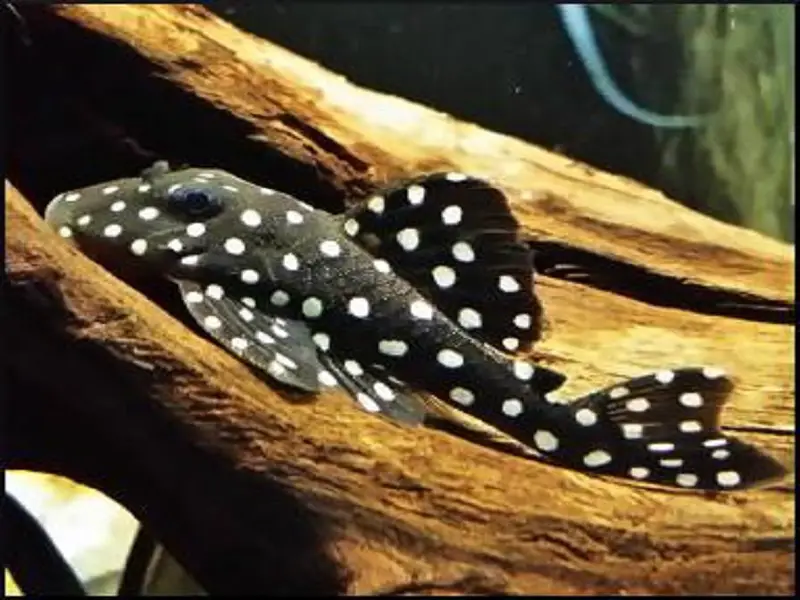
| Category | Rating |
| Care Level: | Easy |
| Temperament: | Solitary |
| Color Form: | Black and white or yellow |
| Lifespan: | 8-10 years |
| Size: | 5.5 – 6.3 inches |
| Diet: | Omnivore |
| Family: | Loricariidae |
| Minimum Tank Size: | 40 gallons |
| Tank Set-Up: | Freshwater with rocks and plants |
| Compatibility: | Peaceful community |
Snowball Plecos hail from Venezuela, specifically the Rio Negro, which is the world’s largest blackwater river. A tributary of the Amazon River, it eventually feeds into the Amazon in Brazil. The Rio Negro is called a blackwater river because of its tinted color, which is more of a dark brown tea shade.
Snowball Plecos, scientific name Hypancistrus inspector, is one of the smaller plecos around, so you won’t need as large of a tank as you would with some of the other pleco species that measure in at 20 inches (51 cm)–these fish won’t get much past 6 inches (15 cm).
Given optimal water and habitat conditions, Snowball Plecos will live for 8 to 10 years. To achieve these conditions, keep the water clean, test often, keep stress low, and do your best to recreate their natural habitat.
Snowball Plecos are susceptible to disease and are also sensitive to copper, so it’s important to offer the best care possible for these beautiful and peaceful fish.
Typical Behavior
Solitary creatures, Snowball Plecos will pretty much ignore any other creatures in the tank. They are nocturnal and will come out more at night; it is really neat to see their yellow or white snowballs flashing in the darkness.
But during the day, they do a lot of hiding in caves. You may see them flitting through the plants, caves, and driftwood that you have provided.
Like other plecos, Snowball Plecos are aggressively territorial around their own kind and other plecos. If you keep multiples, make sure you don’t house more than one male, as it is the males that can get aggressive.
Aside from the issue with other male plecos, Snowball Plecos are peaceful and unassuming and won’t cause trouble in your tank.
Appearance
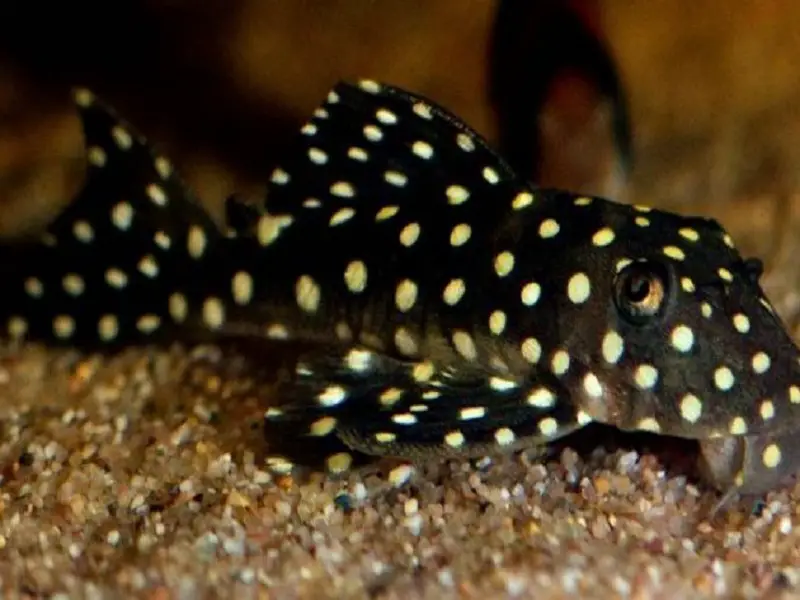
Classic pleco, in terms of their appearance, is recognizable by their torpedo-shaped bodies, downturned mouth, and flat bellies. Snowball Pleco also has the same whiskers you’d expect to see in a pleco.
Also, pleco-like are pelvic and pectoral fins, which splay out, and that dorsal fin that is triangular and can stand up when they want to show off.
And that’s where the classic pleco comparison ends. Snowball Plecos coloration is unique and special, with allover white or yellow “snowballs” accenting a black or dark gray base. They are just lovely to look at and spectacular addition to any home aquarium.
Snowball Plecos are also smaller than the average plecos, coming in between 5.5 and 6.3 inches, or 14-16 centimeters.
See related: eclipse catfish care
Differentiating between males and females
While some fish display only subtle differences, male and female Snowball Plecos are easy to distinguish. Females are more rounded than males (hello, baby makers). You’ll also see that males have a noticeable reddish tone.
Additionally, Snowball Pleco has cheek plates with these crazy teeth on the side of their head–yes, I am talking about external teeth. These teeth, called odontodes, are more pronounced on male Snowball Plecos.
Habitat and Tank Conditions
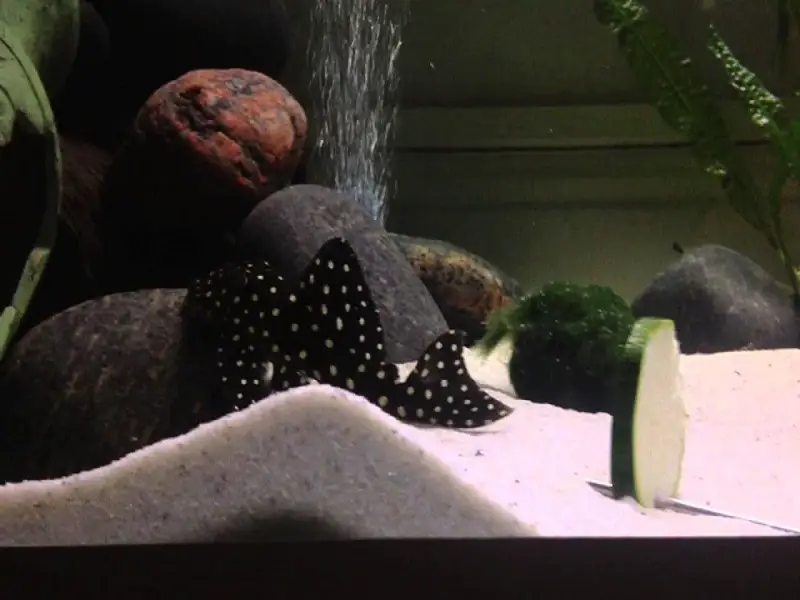
As I mentioned, Snowball Plecos are from the Rio Negro in Venezuela, the largest blackwater river. Anything you can do to recreate their natural environment in your home aquarium is going to do wonders for their stress level and improve their quality of life.
Since these plecos are bottom dwellers, choose a soft substrate like sand that won’t irritate their underbelly. Gravel might even cause cuts that could get infected.
Next, you’ll want to choose plants and caves, both of which provide needed hiding places for Snowball Plecos. Driftwood also provides decent hiding places and will help create the “black” water they are accustomed to. These additions not only offer places to hide but equal endless adventures for your curious Snowball Pleco.
Snowball Plecos enjoy exploring around the greenery that you plant, but you don’t have to worry about them eating the plants.
Water Conditions
Snowball Plecos like currents that are on the strong side–this condition is similar to their natural river environment. Their home river, the Rio Negro, has soft, acidic waters, a unique mix that you will need to achieve in your home aquarium.
You can add some peat to the filter to create the same tea-stained water appearance that they enjoy in the Rio Negro. Driftwood will also create some tannins and therefore the color. People have also been known to add decaffeinated tea to create the color. Additives are also sold to alter the watercolor if you’re not a DIY person.
You will also want to invest in a water test kit if you are just starting out in the hobby. When your Snowball Pleco and your aquarium first meet, there is an acclimation period, and it’s important to test the water parameters frequently to make sure you are maintaining the water conditions.
I recommend testing once a week when you first get your Snowball Pleco. After you are certain of consistency, you can test every other week. You should complete a 50 percent water change every other week. If your testing shows that you are not maintaining the water parameters, you can try a 30 percent change every week. Just watch the parameters, and if you’re performing water changes every week, you should also test every week.
Pro tip: Avoid using tap water in the tank with Snowball Plecos as tap water contains copper, which is toxic to these fish.
You’ll need a strong filter to keep the water clean, keep ammonia and nitrate levels in check, and keep oxygen levels high. Since Snowball Plecos like a faster current, the stronger filter will provide that added benefit, too.
The optimal parameters to ensure the best quality of life for Snowball Plecos
- pH levels: 5.0 to 7.6
- Water hardness: 6 to 10 dKH
- Water temperature: 72° to 86°F (22.2° to 30°C)
What Size Aquarium Do They Need?
Snowball Plecos don’t require huge tanks, but you will need at least a 40-gallon tank. Of course, if you’re keeping a community tank with a variety of species, you’ll need something larger than 40 gallons.
However, you’re not dealing with a larger pleco that could grow to 20 inches, so you don’t have to worry about getting a really large tank that will accommodate the fish’s future size.
There is evidence that Snowball Plecos that have larger tanks and more room to swim around actually live longer than those that are kept in smaller tanks. So if you have space, treat them to a larger tank.
Tank Mates
You should choose tank mates that are similar in size to Snowball Plecos, as well as those with peaceful temperaments. Unless you put another pleco in the tank, the Snowball Plecos are not going to pay any attention to their tank mates.
Of course, you’ll want to choose tank mates that have similar habitat and water requirements.
Suitable Tankmates
Keeping Snowball Plecos Together
Plecos are extremely territorial, and will not do well with other Snowball Plecos. In fact, you should keep Snowball Plecos away from all other plecos.
Diet
Snowball Plecos are omnivores and should be offered a varied diet of greens and animal protein. In the wild, they subsist on algae, animals, detritus, and seeds.
Although they will get some nutrition from the algae and biofilm in your tank, they also need the nutrition that you provide.
You can offer them:
- Algae wafers
- Blanched peas
- Bloodworms
- Brine shrimp
- Cucumber
- Daphnia
- Sinking pellets
- Spinach
- Zucchini
To prevent overeating and poor tank conditions, limit the food you give your Snowball Plecos to as much as they can eat in two minutes.
You should remove any leftover food unless you are keeping scavengers like Japanese Trapdoor Snails who will consume all the leftover food.
See also: convict tang care
Care
Like all freshwater fish, Snowball Plecos are susceptible to parasitic, bacterial, and viral diseases.
Ich, or white spot disease, is caused by a parasite and is noticeable by the white spots that the fish gets all over its body. Ich is super contagious and should be treated immediately.
The normal over-the-counter treatment for Ich is made with copper. However, Snowball Plecos are sensitive to copper, so you’ll have to choose the formula that is made without copper. If you are also keeping snails or crustaceans, you’ll need the copper-free variety anyway.
The most important thing is to quarantine and start treating the Ich right away as it can be fatal if not treated promptly. You also don’t want it to spread to the rest of the tank.
Other parasitic diseases you’ll want to watch out for are Hole-in-the-Head disease and skin flukes.
Of course, the best way to minimize the chances of your Snowball Plecos getting sick is to keep the water clean. Additionally, keeping stress levels low will improve your Snowball Pleco’s immune system and lessen its chances of getting sick.
Finally, always, always quarantine any new fish, plant, or decoration before adding it to your community aquarium. Parasites, bacteria, and other organisms can enter your tank without your realizing it if you don’t quarantine.
This could be disastrous for your aquatic community as the unwelcome additions can soon become uncontrollable. Think about a bunch of eggs that make their way into your aquarium on a new piece of driftwood–once those eggs hatch it will be very hard to control the spread in your tank.
Breeding
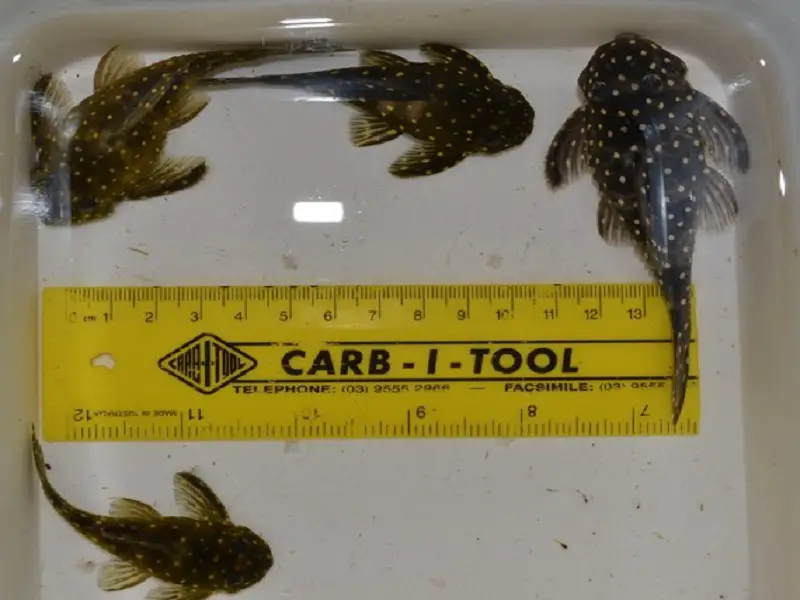
While Snowball Plecos are appropriate for beginning hobbyists, breeding them is not. It takes a lot of work and a separate tank to encourage Snowball Plecos to breed in captivity. You definitely need to provide the right conditions for reproduction.
Make sure the water conditions in the breeding tank follow the recommended parameters and that the water is as clean as can be. You’ll also need large caves so that the females have a place to lay their eggs.
Ready your chosen pair with live and frozen food after you put them in the dedicated breeding tank. The successful pairing will be evident when (if) the female Snowball Pleco puffs up with eggs.
She will then lay her eggs in the cave you have provided. Then the male takes over, protecting the eggs and fanning them. It takes about a week for the eggs to hatch. The fry’s first food will be the egg sac, and after that, you can offer them baby brine shrimp and small bits of blanched vegetables.
Are Snowball Plecos Suitable for your Aquarium?
Snowball Plecos are a great choice for your community aquarium. They have the dual benefit of being great to look at and use as tank cleaners.
Although they are susceptible to some common fish diseases, their care is easy enough for them to be appropriate for beginning hobbyists. The only thing you’ll want to watch out for is other plecos, due to territorial issues.
I just never get tired of looking at these gorgeous snowballs. Their elegant coloration and pattern combined with that flat catfish mouth never get boring.
Do you keep Snowball Plecos in your community aquarium? Let us know about your experiences in the comments section below!
FAQ
Is my Snowball Pleco a vegetarian?
Not at all! Snowball Plecos are omnivores, and while they will eat algae in your tank, they need meaty protein, which they consume a lot of in the wild. If you’re planning on trying to breed them, you’ll definitely need to offer live and frozen food during mating.
Do I need to have a separate breeding tank?
Breeding Snowball Plecos is tricky, and a hit-or-miss prospect. If you do attempt breeding, you will need a dedicated breeding tank. You will introduce a breeding pair into the breeding tank when you are ready to try mating them.
Keep in mind that male Snowball Plecos, and plecos in general, are territorial and aggressive with each other, so I don’t recommend keeping multiple males in the community tank.
I’m just starting my fish-keeping hobby. Would these fish be a good choice?
Yes! Snowball Plecos are easy to care for, so they are a good choice for beginning hobbyists. However, they do need optimal and stable water conditions, so be prepared to perform regular water changes and test regularly.
They are more susceptible to disease than other fish, so if they do get sick and you need to treat them, always remember that they are intolerant of copper, so always buy medications that are copper-free.
What is the average lifespan for Snowball Plecos?
Snowball Plecos have an average lifespan of 8-10 years in captivity.
I have limited space for my aquarium. Are Snowball Plecos an appropriate fish?
You’ll need at least a 40-gallon tank for a Snowball Pleco. That’s much smaller than many other plecos need, but 40 gallons is still a pretty significant size; they definitely won’t work in a nano tank. They need more room to swim and explore the bottom of the tank.

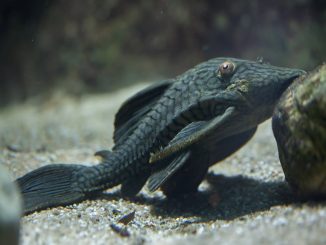
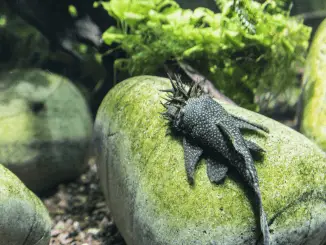
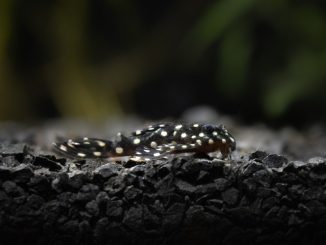
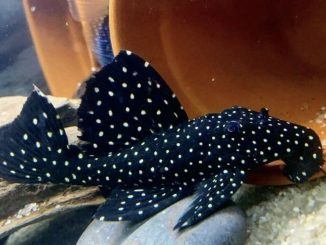
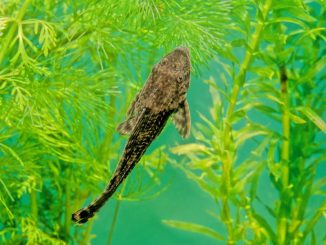
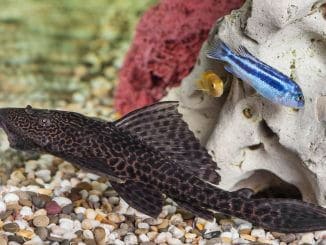
My Snowball Pleco lived a little over 20 years old and was just under 10 inches with a very broad,wide body. Very easy fish to care for, I had him in a 29 Gallon with an aquaclear 50 filter for strong water flow. He(or she) lived with all kinds of swimming roommates over the years and seemed amused by all of them.